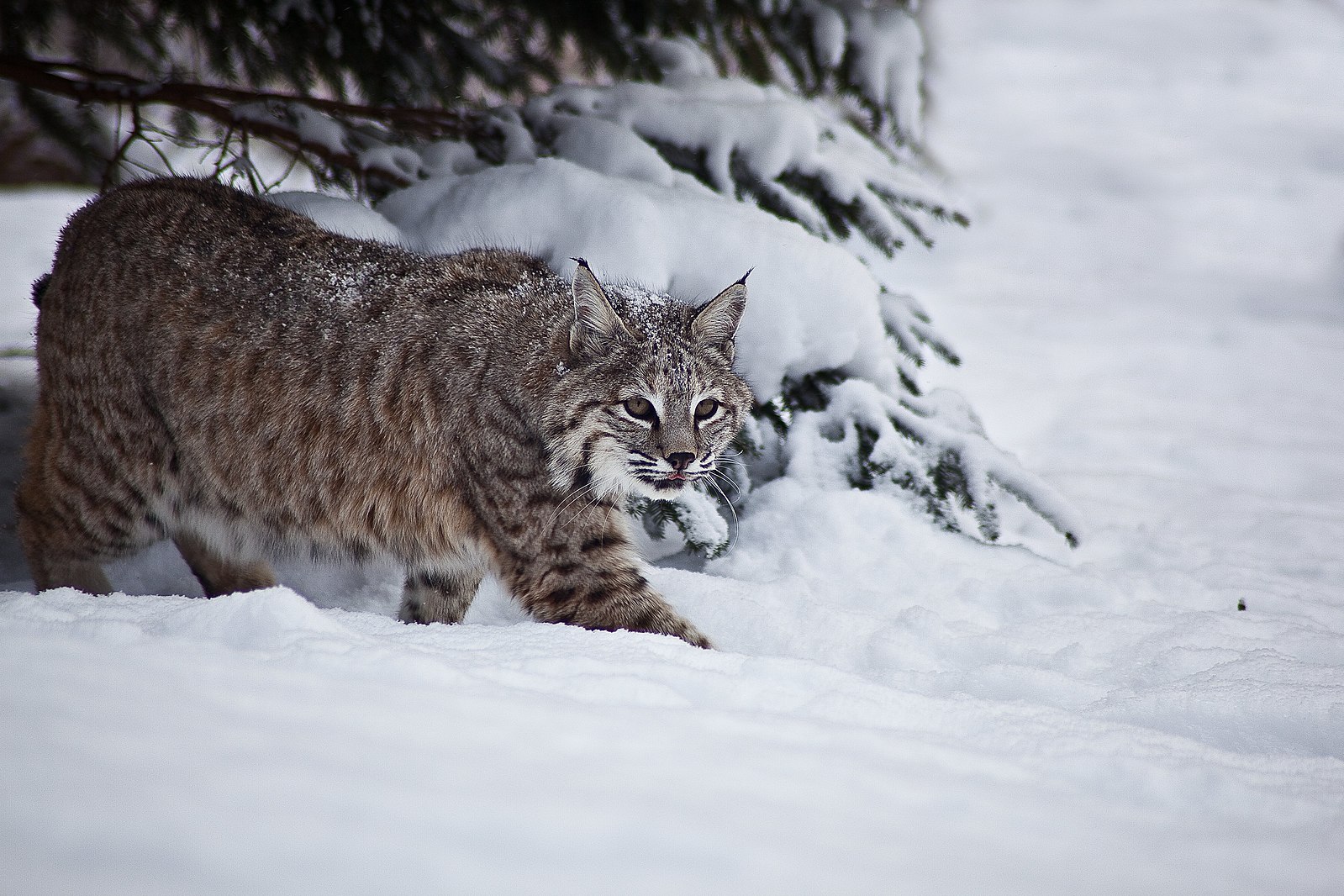
(Forest Wanderer/Wikimedia Commons)

(Forest Wanderer/Wikimedia Commons)
University of Connecticut researchers are better equipped to study and help conserve feline predators after developing a new statistical model for tracking them.
The model is the first of its kind to factor in animals’ resting periods, allowing GPS data to more accurately reflect the large amount of time wild cats are not walking from one location to another. Other models can’t account for these periods, making this one ideal to give a clearer picture of the actual lives of feline predators.
“Compared to other movement models, this model allows the animals to stay still,” said Jun Yan, a professor of statistics at UConn, in a virtual interview. “Only a small portion of their life is spent moving.”
The model is a “highly technical thing,” said Thomas Meyer, a professor in the department of natural resources and the environment, in a telephone interview. He emphasized the complexity behind factoring in resting periods, and explained that it is helpful in learning more about feline predators.
“You can’t manage something you don’t understand,” Meyer said.

Meyer is using the new model to study mountain lions across the country. It has allowed him to learn about how the species is affected by the changing seasons. He once hypothesized that mountain lions are impeded by adverse conditions during winter months. But his analysis of GPS data with the new model yielded a surprise: the cats move the same distance in the winter despite harsher conditions.
He explained that researching mountain lions is important because they significantly benefit their ecosystems. Species like deer, elk, and sheep would overpopulate and overgraze the land if mountain lions were not there. Adequate research ensures that conservationists can take the steps necessary to best protect mountain lions and keep ecosystems balanced.
“Apex predators are the keystone to keeping ecosystems healthy,” Meyer said.

Tracy Rittenhouse, an associate professor in the department of natural resources and the environment, is incorporating the new model into her research on bobcats in Connecticut. She is working with the Connecticut Department of Energy and Environmental Protection (DEEP) to track and analyze bobcat populations in the state.
She is on year six of a project that involves tracking bobcats in Connecticut using GPS collars. She recently joined forces with the research team that includes Yan and Meyer to incorporate the new statistical model into her research.
In her original experiment design, the GPS collars on the bobcats recorded and transmitted the animals’ locations once every four hours. To track the cats’ resting periods in accordance with the new model, the collars now record their locations every five, 10, or 15 minutes.
Rittenhouse said that the model “changes our understanding of energy budgets,” as it will allow her team to learn more about how often the bobcats stay still and expend less energy.
Her team is waiting to retrieve a few more GPS collars before it starts analyzing the data. The collars are supposed to fall off the cats at the end of the research period, but Rittenhouse will have to retrieve the ones that failed to do so by re-trapping the bobcats and manually removing the collars.
Once they have recovered the collars, Rittenhouse’s team will spend about a year or two analyzing the data, then write three to four papers worth of conclusions, she said. The results will be directly applicable to DEEP’s bobcat conservation strategies.
“Collaboration with DEEP is foundational to everything I do,” Rittenhouse said. “That’s the applied ecologist in me.”
Meyer’s and Rittenhouse’s research on feline predators is collaborative in nature. Meyer works with a biologist from Panthera, a worldwide wild cat conservation organization. Additionally, the development and implementation of the advanced tracking model brings together experts in both ecology and statistics.
“This particular line of research calls for mathematical firepower that basically no ecologists have,” Meyer said.
The statistical model that enables this advanced research is the culmination of years of problem solving, said Yan. He explained that the ability to account for resting periods is a breakthrough in statistics that allows for a model to better encapsulate the natural movement of animals.
“It’s been 10 years,” Yan said. “We finally have a not perfect, but reasonable and practical, solution to this problem.”